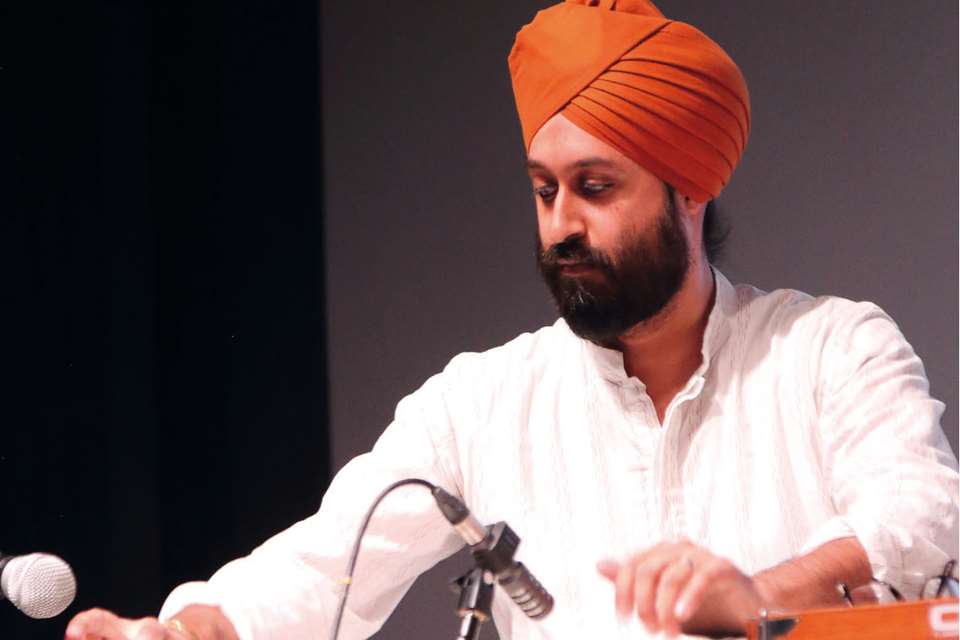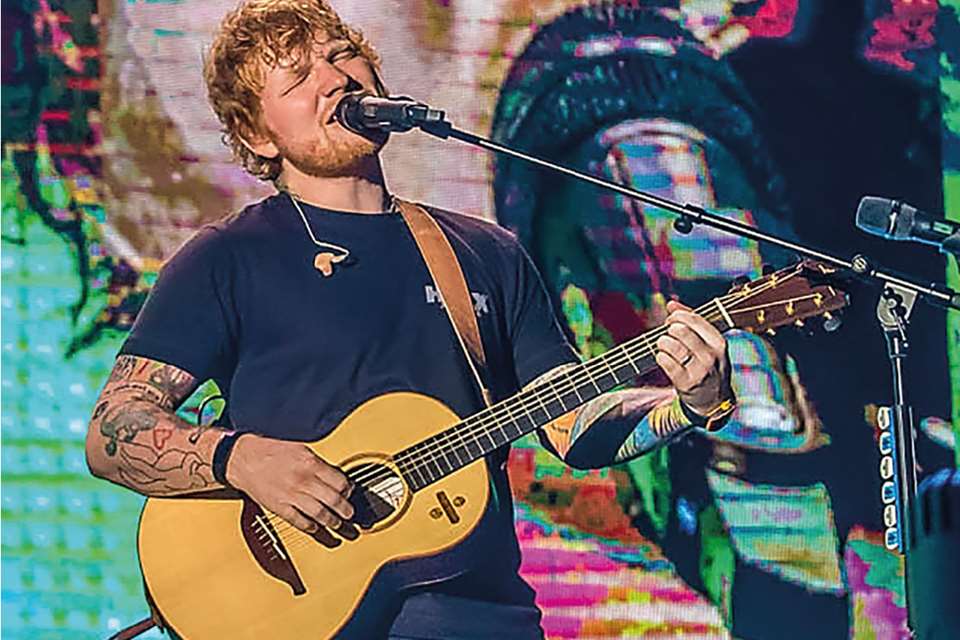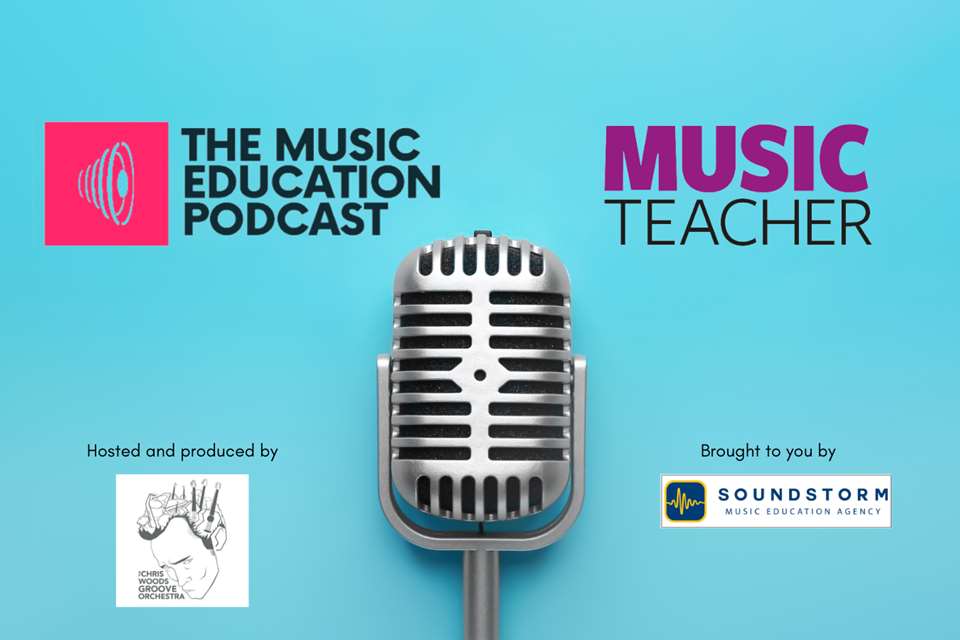Take it away: Inclusive learning beyond the music classroom
Chris Woods
Monday, August 1, 2022
Lack of musical or technical equipment at home is often cited as a barrier to music making. While this remains true, Chris Woods of the Chris Woods Groove Orchestra and host of The Music Education Podcast shares some ideas for more accessible ways to encourage students to take their learning beyond the classroom.

AdobeStock/Antonioguillem
Even the most well-crafted classroom is usually not a truly inclusive space for creating. Time constraints, peer pressures, lighting; so many elements can make the classroom an uncomfortable place to make music for even the most ‘neurotypical’. Giving students the tools to create in their own time and own way is a golden ticket to access to music for all. As music therapist Sarah Gummett-Hart recently explained to me, for many students, even just the ‘noise’ of a music classroom can be ‘overwhelming’. She pointed out that, ‘Offering children skills that they can use in their own space and time could be the key to developing their own unique musical identity.’
In this article I offer five lesson ideas that can translate to working at home – they introduce an idea at school that can be continued in the student's own space. Everything is free and widely available or accessible. You must make your own judgement when it comes to the use of tech on what is appropriate for your students or setting.
Table drumming
The term ‘table drumming’ loosely blends two fantastic disciplines: ‘finger drumming’, which happens to be one of the most fundamental skills for anyone working with electronic music, and ‘hand drumming’, which is the foundation of the majority of percussion. It's outrageously addictive and can be done anywhere. I'd recommend approaching this with students firstly as a composition project to create a ‘table drumming composition’. Begin by teaching two hand movements, firstly hitting the table with the heel of your hand for a kick drum sound, and then a snare drum sound created by tapping the table with your fingers.
From here you can let you imagination run wild, dividing the class into different sections with cross rhythms galore. The sound will be unquestionably thunderous, and, with the right approach, some serious groove can be found. I'd then recommend introducing some finer and softer finger drumming, repeating the same ideas but using different fingers.
To inspire students to take this further at home, simply demonstrate how important both finger drumming and hand drumming are. If you need convincing of this, with a brief YouTube search you will quickly see how crucial finger drumming is. The rise of the desktop app melodics is testament to that. On the other hand (sorry!), you will also find a whole host of incredible percussion videos of musicians hand and finger drumming on a table, which is suitably impressive and applicable to all percussion.
Synthesiser session
A music lesson on what a synthesiser is and how to use one is not just something for music tech teachers. If you have zero knowledge of synthesis, after 10 minutes on Ableton's ‘Playground’ (it's free) you will be more than comfortable with playing and exploring and, crucially, inspiring students to do the same at home. The web app teaches you the basics of synthesis, but also offers an online synth that you, and your students, can explore at home for hours on end in your own space. I'd suggest getting together some of your favourite synth-driven music to offer some examples to students and then demonstrate this wonderful web app.
Simon Lyon of Ableton, who also happens to be a qualified teacher, said, ‘With so many ways to explore, change and create sounds, it's a great opportunity to combine play with learning and encourage endless musical discovery.’ The Ableton Playground is easily found through Google. You can also take things further and get access to Ableton Live 11 Intro for free. There are, of course, other options out there.
Soundscapes and field recording
‘Found sounds’ or ‘soundscapes’ are arguably a much-neglected element of music education. Bearing in mind the fact that so much of modern music incorporates samples of sounds from our surroundings, it's clear that the modern-day producer isn't just concerned with the sounds of an instrument. This exercise is an opportunity to bring your classroom into sync with that perspective and to get your students creating ‘found soundscapes’ in their own time and space.
I'd first recommend a listening session for your students. A bit of Chris Watson will do the trick, or you could reference a pop track that uses found sounds – Coldplay's WOTW/POTP is a personal favourite. Some directed listening will quickly demonstrate the value of recording your surroundings and listening to them.
Then, in whatever way that fits with your school's technical capabilities, get students out there to record the sounds from the school and present them to the class. Tablet, laptop, phone, tape, Dictaphone – anything with a mic and recording function does the job here. It's all about collecting something and presenting it later, helping to change the student's perspective towards that sound. A simple trick when listening back is to ask students to guess what one group has recorded.
Chris Watson, when describing what attracted him to recording environmental sounds in Sound on Sound magazine, said: ‘I was really interested in sounds that I could see but couldn't hear.’ This perfectly highlights how the focus is on changing perspective on a sound or a thing, and I'd recommend that your lesson has that at its heart. At the end of the session, simply suggest that students do this for themselves – any smartphone or tablet will absolutely be capable of doing this. How amazing to capture the sound of a moment that makes them feel great, and to be able to listen to this later?
Apps
This one is deliberately broad, partly because of the unique limitations of each school or student, and partly because of the overwhelming number of free and brilliant apps out there. I see these apps as falling into two categories. Firstly, multi-track recorders/sequencers (apps that enable you to create music on a phone or tablet). Secondly, instrument apps (apps that create sound and can be played like an instrument).
The most simplistic lesson will be to create something using a sequencer app that uses existing samples, like GarageBand or Ninja Jamm. Ten minutes of research relating to your relevant device, and you will find a host of wonderful things. Be aware of implications of in-app adverts and always give it a go before using it with your students.
There's no real need for a class full of iPads for these activities, as you can have a successful session making group composition choices with you at the helm. The aim here is to inform students of the availability of similar apps, demonstrate how accessible they are and, crucially, how valid they are. In other words, this exercise is about validating using music making apps and letting students know that using this stuff is just as valid as any instrument. Rhianna's Umbrella was based around a stock loop from GarageBand, which is always something good to point out.
YouTube singing lessons
This is possibly the simplest lesson idea but can be hugely profound. We have all the information at our fingertips, and so much of it is free, but being directed to a specific website, YouTuber, or app is so often what is needed for students to take action. You could simply find a particular YouTuber (or free online course if YouTube isn't available at your school), and work through parts of the course with the class – they can then continue to work on it at home if they're interested. Learning to sing is a firm favourite, as even the most confident student will be happier doing this in their own space than in a class.
I hope you find some of these ideas useful. They are points of inspiration, so run with them and make them your own.
Listen to this article's accompanying episode of The Music Education Podcast, hosted by Chris Woods and brought to you by Soundstorm:
Music Teacher is media partner of The Music Education Podcast.




